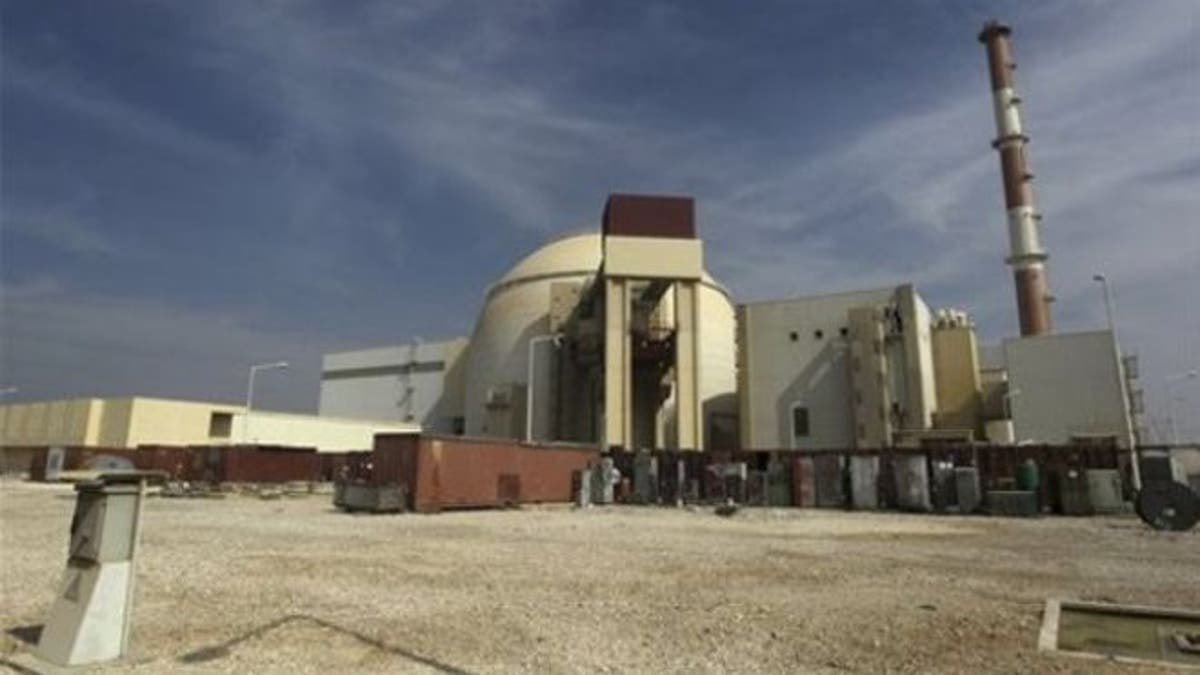
Oct. 26, 2010: The reactor building of the Bushehr nuclear power plant is seen, just outside the southern city of Bushehr, Iran. (AP)
VIENNA – The U.N. atomic agency on Wednesday detailed rapid Iranian progress in two programs that the West fears are geared toward making nuclear weapons, saying Tehran has upgraded its uranium enrichment facilities and advanced in building a plutonium-producing reactor.
In a confidential report obtained by The Associated Press, the International Atomic Energy Agency said Tehran had installed close to 700 high-tech centrifuges used for uranium enrichment, which can produce the core of nuclear weapons. It also said Tehran had added hundreds of older-generation machines at its main enrichment site to bring the total number to over 13,000.
Iran denies that either its enrichment program or the reactor will be used to make nuclear arms. Most international concern has focused on its enrichment, because it is further advanced than the reactor and already has the capacity to enrich to weapons-grade uranium.
But the IAEA devoted more space to the reactor Wednesday than it has in previous reports. While its language was technical, a senior diplomat who closely follows the IAEA's monitoring of Iran's nuclear facilities said that reflected increased international concerns about the potential proliferation dangers it represents as a completion date approaches.
He demanded anonymity because he was not authorized to discuss confidential IAEA information.
The report also touched upon a more than six-year stalemate in agency efforts to probe suspicions Tehran may have worked on nuclear weapons. It said that -- barring Iran's cooperation -- it may not be able to resolve questions about `'possible military dimensions to Iran's nuclear program."
The U.S., Israel and Iran's other critics say the reactor at Arak, in central Iran, will be able to produce plutonium for several bombs a year once it starts up. They have said Tehran's plan to put it on line late next year is too optimistic.
But the report said the Islamic Republic was had told IAEA experts that it was holding to that timeline. The IAEA noted that much work needed to be done at the reactor site, but it said Iranian technicians there already had taken delivery of a huge reactor vessel to contain the facility's fuel. It also detailed progress in Tehran's plans to test the fuel.
Installations of the new IR-2m centrifuges are also of concern for nations fearing that Iran may want to make nuclear arms, because they are believed to be able to enrich two to five times faster than Tehran's old machines.
The IAEA first reported initial installations in February. It said then that agency inspectors counted 180 of the advanced IR-2m centrifuges at Natanz, Tehran's main enrichment site, less than a month after Iran's Jan. 23 announcement that it would start installing them.
Diplomats said none of the machines appeared to be operating and some may only be partially set up. But the rapid pace of installations indicates that Iran possesses the technology and materials to mass-produce the centrifuges and make its enrichment program much more potent.
Iranian nuclear chief Fereidoun Abbasi said earlier this year that more than 3,000 high-tech centrifuges have already been produced and will soon phase out its older-generation enriching machines at Natanz, south of Tehran.
The report also noted Iran's decision to keep its stockpile of uranium enriched to a level just a technical step away from weapons-grade to below the amount needed for a bomb.
More than six years of international negotiations have failed to persuade Tehran to stop enrichment and mothball the Arak reactor.
